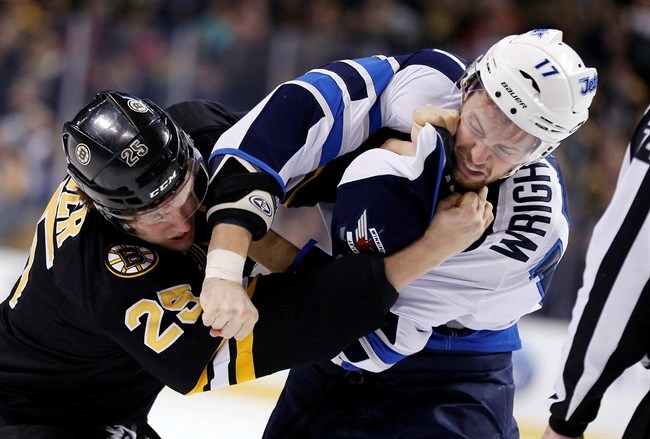Last Saturday, my friend and I got to play tour guide for a visitor from England. He had been living in Canada for several months, but since he was a relative stranger to Victoria, we ran him through the usual tourist gauntlet: the museum, the Inner Harbour, Government Street, etc.
After dinner, we thought it might be fun to knock back a few in Victoria’s best hillbilly bar. The real Canadian experience!
While we were drinking cheap beer and cracking our peanut shells, we noticed that the hockey game was on. As is my wont in bars when non-soccer-related sports are on the screen, I ignored it — or tried to, until our friend pointed and asked us to explain something to him.
He wasn’t confused about any particular aspect of the game, but rather the fact that the game hadn’t started yet, and yet both teams were on the ice, fighting. Even as a hockey ignoramus, I knew that this was atypical behaviour. There didn’t seem to be a reason for it.
I shrugged, bewildered. I couldn’t explain it. Who knew why they were fighting? My friend’s theory was that the teams just hated each other.
“Why is hockey so violent?” our English friend asked, as we watched the refs circle the brawlers, unable to get in close to break up the fights.
“It didn’t used to be,” I insisted, trying to rescue our sport from outsider censure, but I was aware that I didn’t really know what I was talking about. I felt certain that there had been a time in history when hockey was more about skill and speed than checks and brawling, but I couldn’t have told you when it had changed.
My friend provided a different narrative: “Fighting’s been part of hockey for a long time,” she said. That much, at least, is obviously true.
The ice was soon cleared, and we watched as a few rink attendants worked furiously, trying first to scrape and then to chip the blood off the ice. It had soaked in pretty deeply. The players sat in their boxes, breathing hard after the free-for-all.
We checked off “hockey fight” from our list of “Canadian Things.”
Our English friend shook his head in disbelief. It’s not that we weren’t entertained; we were, in a strange way, but he was still perplexed.
“If this had happened in a football match, they’d all be suspended,” he said. “Why is it so violent?”
Certainly, the participants in the brawl that began Saturday’s game have been punished — the Canucks and the Flames both received four misconducts per team. Such punishments, however, are part of North American hockey culture. They’re designed as a response to fighting, but they’re not necessarily intended to reduce or even really punish fighting, which is an integral part of the modern game.
I don’t make a secret of my indifference toward hockey as a general rule, and yet even as I write that, I am aware of hockey’s power as a Canadian institution. The things I claim to dislike about the sport when my coworkers rehash last night’s game are the same things I claim to enjoy when our Canadian men and women make it to the finals in the Winter Olympics. (I’m still jazzed about 2010.)
A myriad of marketing strategies — think Tim Hortons, Olympics advertising, even the hockey sweater — have turned hockey into a pan-Canadian concept, and that fiction is part of what makes hockey so much fun. But according to the fans, brawling seems also to be part of what makes hockey fun.
Even as I wince at the game, I sort of wish I were part of the club. Thinking about moving to Ontario, for example, would be so much nicer if I knew that I had a Canucks jersey that would be coming with me. Something that simultaneously says “British Columbia” and “Canada.”
But looking at the blood splatters on the ice, I was reminded of the violent extravagances of the professional sport, which are then passed down to the children and young adults playing at more junior levels, to devastating effect.
If this is our game, then how did it come to be in such a state? And why are we OK with accepting this kind of violence in a game that’s supposed to be about teamwork?



